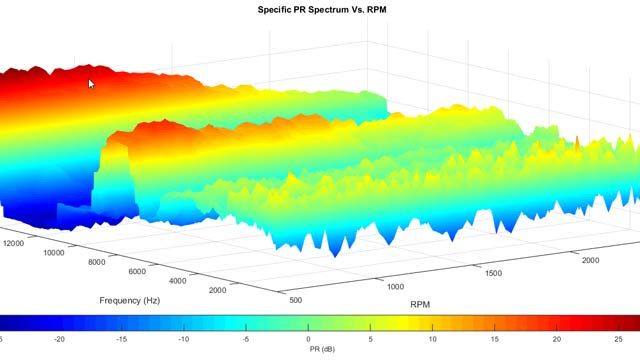Bosch Develops a Single Platform for Automotive Test Data Analysis and Visualization
“MATLAB enabled us to speed the development of ENValyzer, a customizable, easy-to-use tool for analyzing, visualizing, and interpreting engineering data in a wide variety of formats. Now, our engineers can validate components faster and more accurately than was possible with spreadsheets and third-party tools.”
Challenge
Reduce the time and steps needed to process and interpret data from automotive test benches
Solution
Use MATLAB to develop and deploy a platform for analyzing and visualizing engineering data from various domains
Results
- Validation times reduced by an average of 40–50%
- Three to four months of development time saved
- Analysis accuracy increased
Bosch, the world’s largest independent parts supplier to the automotive industry, must meet various quality requirements for its products. Using test benches, components undergo functional, endurance, and other testing.
To enable engineers to rapidly and accurately interpret test data from measurement devices, test benches, and vehicles, Bosch developed ENValyzer (Engineering Test Data Visualizer and Analyzer), a MATLAB® based tool for analyzing and visualizing measurement data.
“ENValyzer has reduced the time engineers spend on data analysis and visualization, improved accuracy, and enabled enhanced visualization of test bench results,” says Sharath SL, project manager at Bosch India. “MATLAB saved us months of development time because it had the data importing, signal processing, statistical analysis, and visualization capabilities we needed built in.”
Challenge
Testing is one of the most critical phases of the engineering product development life cycle, and it demands enormous time and effort. At Bosch, products are subjected to various kinds of testing. Engineers must create test scenarios within the limitations of spreadsheets and other data postprocessing tools. The resulting measurement data comes in many formats, which are dictated by data acquisition software, test bench manufacturers, and other acquisition techniques.
Bosch engineers recognized several drawbacks with using disparate tools. First, the in-house tools required ongoing maintenance. Second, the amount of data the teams needed to process was growing beyond the limits of the tools. Third, the results the tools produced were not accurate enough to enable the engineers to precisely determine the quality of the component under test; in many cases, the data postprocessing software could not be enhanced with new features. Fourth, using the tools to configure and analyze the data involved numerous manual steps. Bosch wanted to develop and deploy a single platform for accurately analyzing and visualizing large amounts of engineering test data from a range of automotive systems.
Solution
The Bosch engineering tools team used MATLAB to develop ENValyzer, a tool that simplifies analysis without compromising integrity and helps engineers arrive at better decisions. The team used the object-oriented programming capabilities of the MATLAB language to simplify ongoing maintenance tasks, including the creation of more than 250 class definition files for the complete application.
ENValyzer uses MATLAB capabilities to read and write measurement data in multiple formats from test benches, vehicles, and acquisition systems.
Using MATLAB and MATLAB toolboxes, the team added several general-purpose analysis capabilities to ENValyzer, including functions for regression analysis, curve fitting, filtering, spectral analysis, data smoothing, and principal component analysis (PCA) calculations. They also developed MATLAB functions for domain-specific analysis.
To enable engineers to visualize analysis results in ENValyzer, the team used MATLAB to add single, secondary, matrix plot, and multiple axis views.
The team added support for generating analysis and visualization reports in PDF, HTML, and Microsoft PowerPoint® formats that show results in tables and plots. Users can create and customize reporting templates for various domains.
Once the team had created this initial version of ENValyzer, they used Signal Processing Toolbox™ functions to add more advanced features for performing Fourier analysis, removing noise with Chebyshev and Butterworth filters, and applying Savitzky-Golay smoothing filters.
They used these new features to automate processes frequently performed by test and validation engineers in specific domains. For the steering group, for example, they added an ENValyzer function that performs filtering, smoothing, and other signal processing operations on steering angle, torque, and other measurement channels to automatically assess the quality of steering gears.
The team added support for running calculations on multiple processor cores simultaneously using Parallel Computing Toolbox™, enabling engineers to analyze several data files at once.
Using MATLAB Compiler™, they created a standalone version of ENValyzer that can be used by test engineers who do not have MATLAB installed.
Bosch is currently using ENValyzer in production, and now offers the tool commercially to other companies via the MathWorks Connections Program and through other marketing forums. Bosch engineers in India, Germany, and North America use ENValyzer to evaluate common rail system and steering system data and to validate steering gear and fuel-level sensors.
Results
- Validation times reduced by an average of 40–50%. “MATLAB enabled us to automate analysis steps in ENValyzer and to analyze several data files at once on multiple cores,” says Sharath. “With these improvements, our engineers have reduced validation cycle times by 40–50%.”
- Three to four months of development time saved. “A key requirement for ENValyzer was the ability to import data from binary files in various formats,” says Sathvik Tarikere Sathyanarayana, senior engineer at Bosch India. “We found it easy to understand the data structure and write the code in MATLAB, and that helped us complete development in about six months. It would probably have taken us three or four months longer if we had used another environment for developing the postprocessing software.”
- Analysis accuracy increased. “We were not happy with the accuracy of the results when we used spreadsheets for data analysis,” says Sharath. “By applying smoothing filters and various analysis techniques in MATLAB, we have improved accuracy. As a result, we can use ENValyzer to classify a gear or other component as good or bad using much smaller tolerances than before.”
